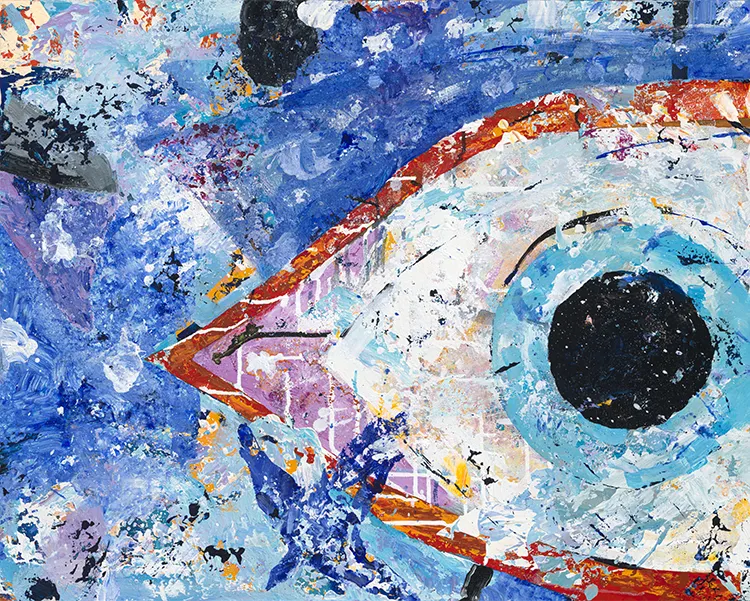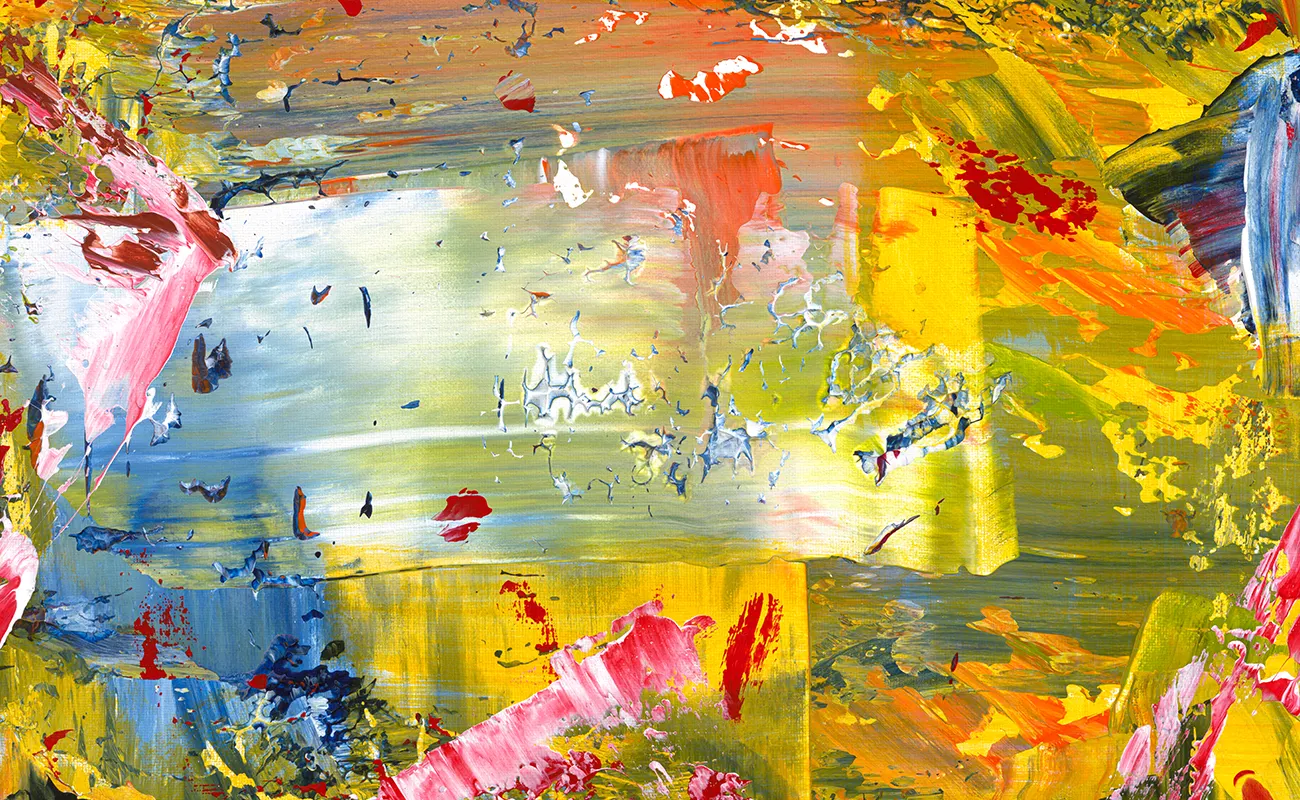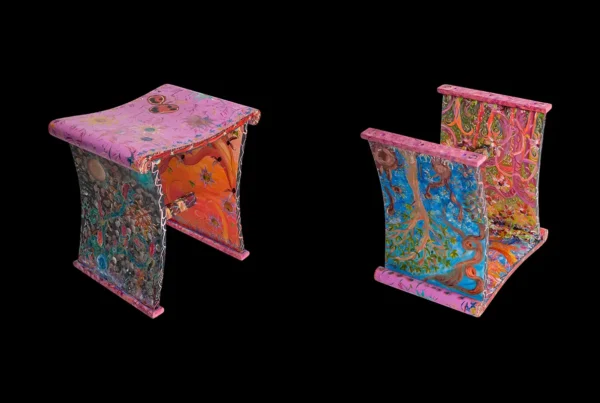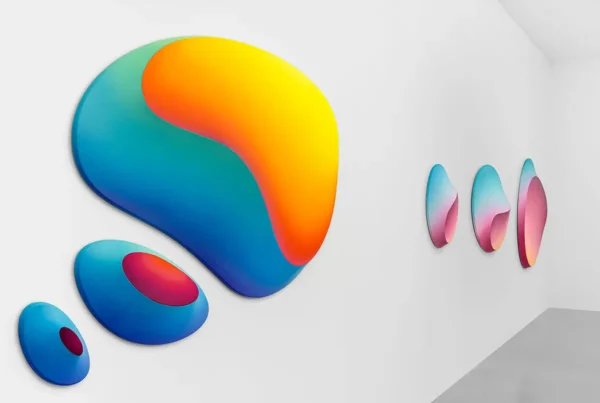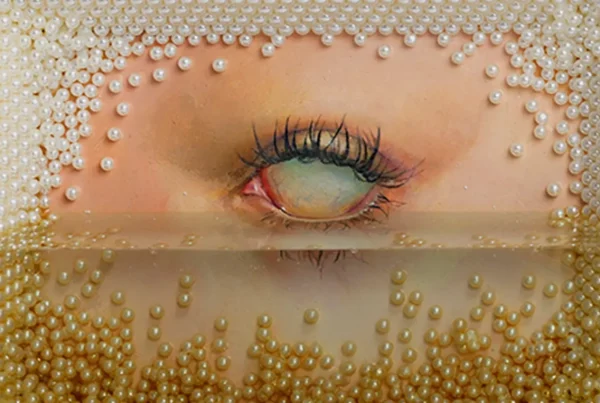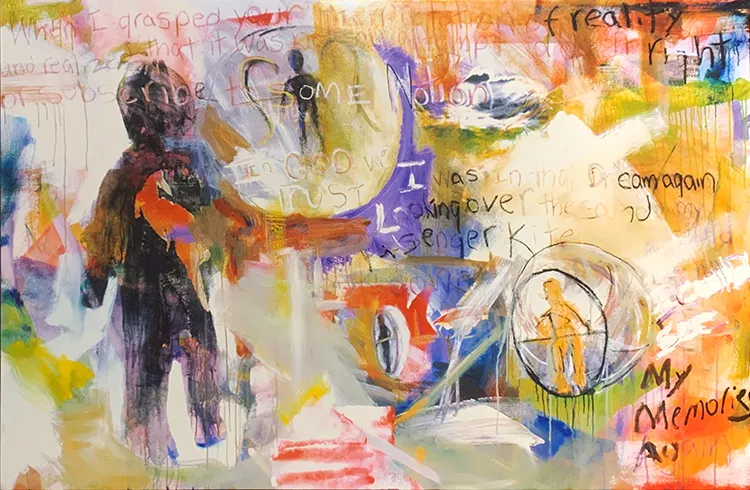
Subscribed to a notion
2003
“I’m attempting to create visual spaces where viewers might recognize something true that lies beyond conventional seeing—an inner knowing that affirms balance in the face of fragmentation.”
The Contradiction of Appearance: From Nostalgia to Awareness
Douglas Jaser, an abstract and mixed media artist based in California’s San Francisco Bay Area, brings a layered perspective to contemporary art that resists simplification. His work probes beneath the polished surfaces of conventional narratives to explore how memory, identity, and perception intertwine. Growing up in a household animated by political dialogue and community engagement, he witnessed firsthand how public messages are curated—and sometimes manipulated. These early experiences formed the foundation for a practice focused on how truths are constructed, concealed, or altered by imagery and language.
He recalls fragments of a seemingly idyllic American past—neighborhood traditions, the quiet wisdom of Mr. Rogers, the familiar faces of local shopkeepers—all symbols of cultural cohesion. Yet even as a child, he sensed an undercurrent of contradiction. This nostalgic backdrop became increasingly complex when he confronted inconsistencies between espoused values and prevailing global actions. His disillusionment deepened during his college years, where he critically engaged with the ethical paradoxes in Western discourse. The routine justification of military aggression, often wrapped in moral language, struck him as a betrayal of shared human values. That friction—between professed virtue and actual practice—remains a persistent driver in his creative process.
Jaser’s artwork is neither polemic nor passive. Instead, it offers a nuanced visual inquiry into how belief systems are formed. Being part of a silenced minority further sharpened his sensitivity to how imagery and rhetoric can both reveal and obscure reality. His abstract compositions aim to make visible the unseen—experiences, truths, and memories that resist linear description. Through layers of paint, texture, and color, Jaser constructs visual spaces meant to awaken a quiet recognition in the viewer: a sense that what is essential often lies just beyond immediate perception.
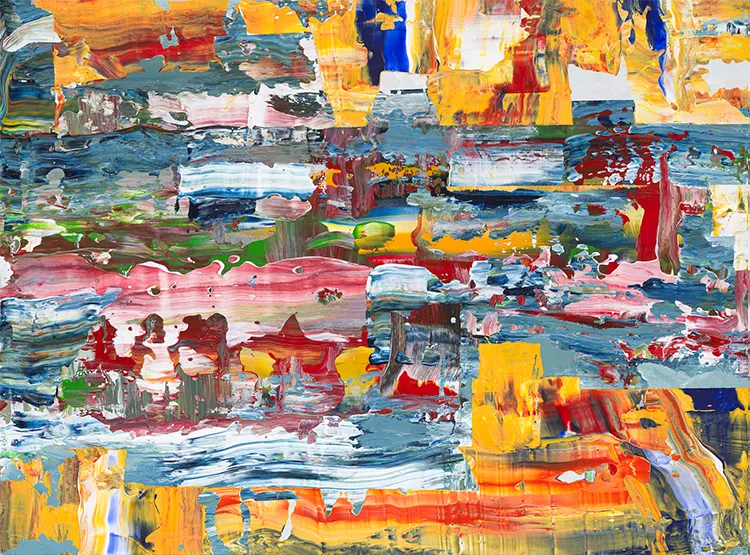
Inlet
2020
Douglas Jaser: A Medium in Motion, A Message in Layers
Jaser’s early fascination with art was nurtured by his exposure to New Haven, Connecticut’s lively arts district. Additionally, the childhood experience of watching Bob Ross transform blank canvases into immersive worlds on TV sparked something irreversible in the young artist. Without formal training at the time, he began experimenting with oil paints, improvising with whatever surfaces he could find. His early works became a refuge, a way to communicate internal storms that language failed to capture. Painting wasn’t merely expressive—it was grounding.
His formal education in Studio Art at Fairfield University, coupled with additional studies in New England and Florence, gave him a strong technical foundation. However, it was his engagement with mentors and established artists that opened the door to a professional path. These mentors modeled the possibilities of artistic life beyond academia, encouraging him to share his work publicly and view art-making as both vocation and inquiry. Rather than adopt a single stylistic lineage, Jaser absorbed influence across time and genre, continually evolving his approach to reflect the questions that preoccupied him most deeply.
Although he has experimented with multiple media—drawing, printmaking, photography—his current preference for acrylic paint aligns with both his aesthetic sensibility and environmental ethics. Acrylic’s rapid drying time and non-toxic qualities allow him to build and strip layers in a way that mirrors the conceptual layers in his work. Paintings such as “Wading” and “Splash” feature rich surface histories, where underlying textures subtly persist beneath new gestures, much like memories that never quite disappear. This visual archaeology becomes central to his practice: each painting is a composite of intentions, accidents, and everything in between.
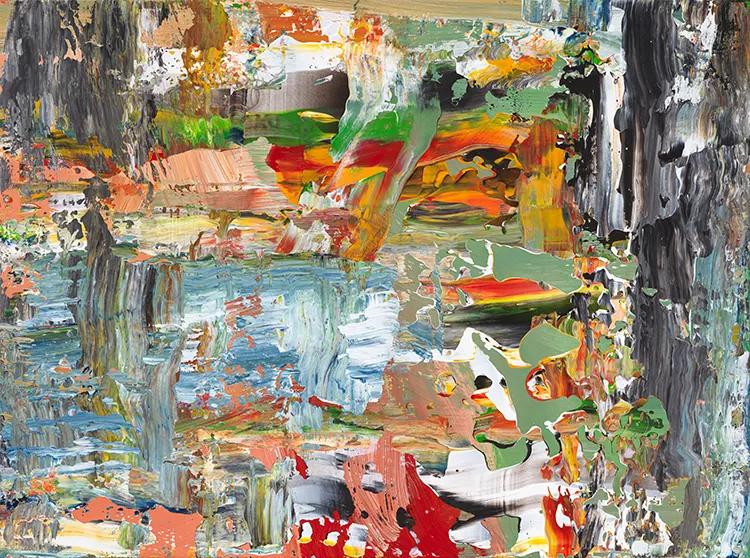
Pending
2021
Intuition, Interruption, and the Unscripted Aesthetic
Jaser’s approach to abstraction is rooted in a reverence for patterns that emerge without orchestration. His visual vocabulary draws from everyday erosion—the chipped paint on old walls, the sedimentary elegance of rock formations, the accidental compositions created by weather and time. These unplanned textures embody a form of integrity that inspires him deeply. Rather than impose meaning, he allows it to surface through process, responding to his materials with a balance of control and surrender.
This duality is especially evident in works like High Noon (2022), where a horizontal swipe of crimson slices through a dense surface of greens and whites. The red band doesn’t merely interrupt the composition—it defines it, invoking the way specific moments irreversibly mark our internal narratives. The textured layers suggest both effort and erosion, capturing a complex dialogue between decisive action and quiet accumulation. For Jaser, this reflects how identity forms—not through singular moments alone, but through a slow interplay of the expected and the unforeseen.
His earlier pieces engaged more directly with political critique. The Newsroom (2003), a brooding study in dark hues and aggressive strokes, questioned how journalism frames collective understanding. Over time, however, his focus shifted inward—toward the emotional and psychological mechanisms through which individuals interpret a fragmented world. Today, his work functions less as argument and more as meditation, inviting viewers to consider how they absorb, interpret, and carry meaning across their own life experiences. It’s less about offering conclusions than about opening perceptual space.
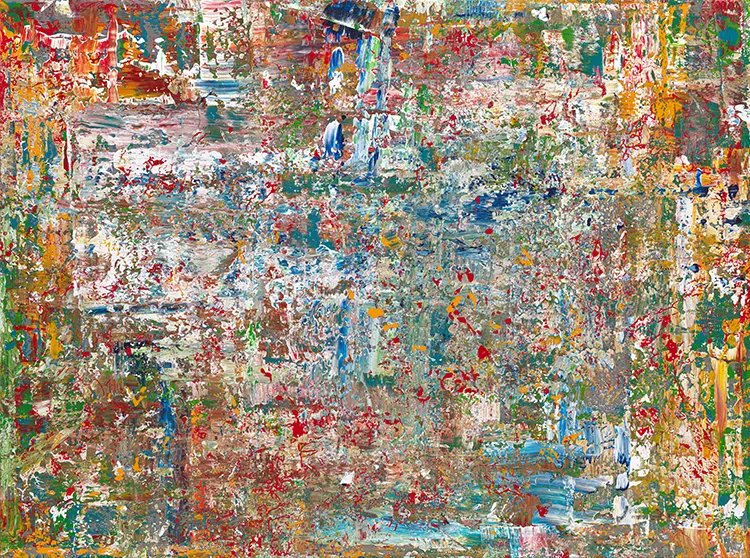
Wading
2022
Douglas Jaser: Between the Prophetic and the Practical
For Jaser, the studio is both sanctuary and laboratory. He requires only the essentials—natural light, a floor surface for painting, paint, and canvas—but enhances his focus through soundscapes: music and podcasts that feed the thematic undercurrents of his work. His process involves physical engagement, using palette knives and various tools to apply and then disrupt the paint’s surface. Acrylic, chosen for its versatility and safety, supports this dynamic interplay between building and erasing. Distractions aren’t rejected—they’re interrogated. Every interruption becomes an opportunity to explore broader cultural patterns, asking whether the distraction is random or manufactured.
Among his most resonant influences is Jean-Michel Basquiat, particularly the 1982 painting Profit I. Jaser sees in this piece a reflection of the very paradox that animates his own concerns: the spiritual vocation of the artist entangled in the commodification of creativity. In Basquiat’s work, the haloed figure dressed in vibrant red evokes both prophet and product, standing within a dark void lit by fire and gold. The dual reading of “Profit” and “Prophet” captures a dilemma Jaser knows well—how to maintain spiritual and conceptual integrity in a marketplace that assigns dollar values to artistic insight.
This complex tension fuels his current project, which explores the convergence of abstraction and symbolism. In Return to the Space We Forgot, he introduces representational elements into his abstract vocabulary, depicting an image that is at once a ship and an eye. This dual symbol reflects journeys both outward and inward, referencing Odysseus’s mythic voyage and Mediterranean iconography of the protective eye. The challenge he sets for himself is technical as well as thematic: how to maintain the spontaneity of abstraction while anchoring meaning in recognizable forms. His goal is not to illustrate but to suggest—to offer symbols as navigational tools that guide viewers toward their own hidden truths.
